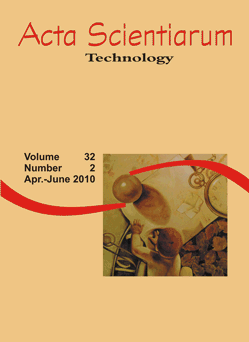<b>Implementation of Six Sigma program in an industry of slaughter of chicken</b> - doi: 10.4025/actascitechnol.v32i2.527
DOI:
https://doi.org/10.4025/actascitechnol.v32i2.527Keywords:
statistical control, processes, partial and total condemnation, poultryAbstract
In recent years, the poultry slaughter industry has sought to strengthen its processes, looking to meet the market needs. To contribute to the development of these processes, new methods have been created, among which is the Six Sigma program. The present study shows the use of this program at a chicken slaughterhouse, with the objective of demonstrating the best practices to define and conduct a project centered on improving the quality of processes. To that end, the methodology and criteria were defined to identify problems and select projects, as well as applying the Six Sigma program with the use of DMAIC in a previously selected project, looking to demonstrate the development of the program. Project application is shown in six stages, through a map of reasoning for each stage or step, which shows the details of the statistics techniques used until the action plan space. The verification and standardization phases of the processes are not contemplated in this study. The final results demonstrate the benefits of using the program and the importance of maintaining the database with the involvement of people for its success.Downloads
Download data is not yet available.
Downloads
Additional Files
Published
2010-07-12
How to Cite
Mazzuchetti, R. N., Opazo, M. A. U., & Gimenes, R. M. T. (2010). <b>Implementation of Six Sigma program in an industry of slaughter of chicken</b> - doi: 10.4025/actascitechnol.v32i2.527. Acta Scientiarum. Technology, 32(2), 119–127. https://doi.org/10.4025/actascitechnol.v32i2.527
Issue
Section
Agricultural Engineering
License
DECLARATION OF ORIGINALITY AND COPYRIGHTS
I Declare that current article is original and has not been submitted for publication, in part or in whole, to any other national or international journal.
The copyrights belong exclusively to the authors. Published content is licensed under Creative Commons Attribution 4.0 (CC BY 4.0) guidelines, which allows sharing (copy and distribution of the material in any medium or format) and adaptation (remix, transform, and build upon the material) for any purpose, even commercially, under the terms of attribution.
Read this link for further information on how to use CC BY 4.0 properly.
0.8
2019CiteScore
36th percentile
Powered by 



0.8
2019CiteScore
36th percentile
Powered by 

















8.png)




